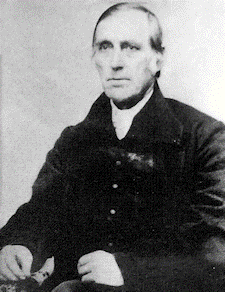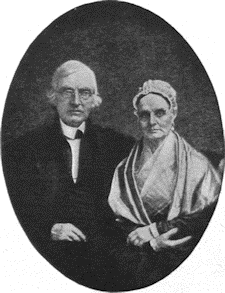This section comprises key people associated with the Underground Railroad movement. Click the name listed (in Bold) for further details. Details being added – more soon.
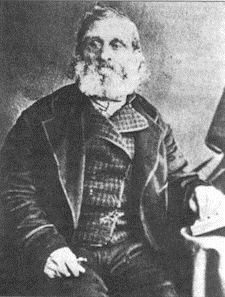 Wilson Ruffin Abbott (1801–1876) Wilson Ruffin Abbott (1801–1876)
Wilson Ruffin Abbott was an American-born Black Canadian and successful businessman and landowner in Toronto, Ontario. Having to flee the United States in 1834, he became a wealthy man in Toronto and one of the largest landowners in the ward. Prominent in local affairs, he was elected to Toronto City Council, instigated taxpayer petitions on public issues of concern to both black and white residents and served on the organizing committee for the Canadian Anti-Slavery Society. He helped purchase freedom for fugitive slaves. |
|
 Henry Box Brown (1815 or 1816 – after 1889) Henry Box Brown (1815 or 1816 – after 1889)
Henry “Box” Brown was a 19th century Virginia slave who escaped to freedom by arranging to have himself mailed to Philadelphia abolitionists in a wooden crate. As a free man, he lectured on the evils of slavery, participated in the publication of the Narrative of Henry Box Brown, toured in the US and England presenting his panorama, Henry Box Brown’s Mirror of Slavery, and performed as a hypnotist. |
|
 John Brown (1800–1859) John Brown (1800–1859)
John Brown was a white American abolitionist who believed armed insurrection was the only way to overthrow the institution of slavery and, with the intent of inspiring a slave insurrection, eventually led a party of 21 men on an unsuccessful raid on the Harpers Ferry federal armory that ended with his capture. Brown’s trial resulted in his conviction and a sentence of death by hanging. In a speech to the court before his sentencing, he stated his actions to be just and God-sanctioned. Debate ensued over how Brown should be viewed, deepening the divide between North and South and having profound implications for the direction of the country.
|
|
 William Wells Brown (c. 1814-1884) William Wells Brown (c. 1814-1884)
William Wells Brown was the son of a slave woman and a white relative of his owner. After twenty years in slavery, he escaped to freedom and spent the next two years working on a Lake Erie steamboat running fugitive slaves into Canada. He then began his career in the abolitionist movement by regularly attending anti-slavery meetings and speaking at local abolitionist gatherings. In 1849, he began a lecture tour of Britain and remained there until 1854, as at that time it was dangerous for an escaped slave to return to America. Concern for Brown’s safety prompted British abolitionists to “purchase” his freedom in 1854. When he did return, he had written Clotel: The President’s Daughter; A Narrative of Slave Life, the first novel published by an Afro-American. |
|
 Obadiah Newcomb Bush (1797-1851) Obadiah Newcomb Bush (1797-1851)
Obadiah Newcomb was an ancestor of the Bush political family. Born in New York to blacksmith Timothy Bush the Younger and Lydia Newcomb. In 1821, he married Harriet Smith in Rochester, New York. They had seven children, among them James Smith Bush. In Rochester, Bush became a schoolmaster and was on a committee that nominated candidates for justice of the peace. He and his brother Henry, a manufacturer of stoves, were known abolitionists. He served as vice president of the American Anti-Slavery Society and supported the Underground Railroad. He petitioned the New York State Legislature to secede from the Union in a protest against slavery, after which The Rochester Daily Advertiser accused him of encouraging anarchy. In 1849, he traveled to California due to the gold rush, leaving wife and children behind. After two years, he was on his way home to reclaim his family and take them west, when he died aboard the ship and was given a sea burial. |
|
|
Levi Coffin (1798-1877) and Catharine White Coffin (1804-1881) Levi and Catharine Coffin were Quakers from North Carolina who vehemently opposed slavery and became deeply involved with the Underground Railroad in Indiana and Ohio. They worked tirelessly to provide transportation, shelter, food and clothing for thousands of fugitive slaves. As a child in the south, Levi witnessed the cruelty of slavery and, later with his wife Catharine, “did not feel bound to respect human laws that came in direct contact with the law of God.” Levi was a well-respected community leader with several business interests. Instead of hiding his work, he jokingly boasted about being nicknamed the “President of the Underground Railroad” and publically spoke out against slavery. He often used the law to his advantage and was friends with social reformers Henry Ward Beecher and Frederick Douglass. Catharine was also deeply committed to the cause. She organized sewing circles that made new clothing for fugitive slaves and ensured their safety and comfort in their home. In 1847, the Coffins moved to Cincinnati, Ohio so Levi could operate a wholesale warehouse supplying goods to free-labor stores. The Coffins were ideally situated to continue helping fugitive slaves escape to freedom. Following the civil war Levi continued to help African Americans right up until his death. He spent his last years campaigning for donations to help fund food, clothing and educational supplies for the newly freed slaves abandoned in refugee camps by ex-slaveholders after the war. |
|
|
Ellen Craft and William Craft were slaves from Macon, Georgia in the United States who escaped to the North in December 1848 by traveling openly by train and steamboat, arriving in Philadelphia on Christmas Day. She passed as a white male planter and he as her personal servant. Their daring escape was widely publicized, making them among the most famous of fugitive slaves. Abolitionists featured them in public lectures to gain support in the struggle to end the institution. As the light-skinned quadroon daughter of a mulatto slave and her white master, Ellen Craft used her appearance to pass as a white man, dressed in male clothing, during their escape. As prominent fugitives, they were threatened by slave catchers in Boston after passage of the Fugitive Slave Act of 1850, so the Crafts emigrated to England. They lived there for nearly two decades and raised five children. The Crafts lectured publicly about their escape. In 1860 they published a written account, Running a Thousand Miles for Freedom; Or, The Escape of William and Ellen Craft from Slavery. One of the most compelling of the many slave narratives published before the American Civil War, their book reached wide audiences in Great Britain and the United States. After their return to the US in 1868, the Crafts opened an agricultural school for freedmen’s children in Georgia. They worked at the school and its farm until 1890. Their account was reprinted in the United States in 1999, with both the Crafts credited as authors, and it is available online at Project Gutenberg and the University of Virginia. |
|
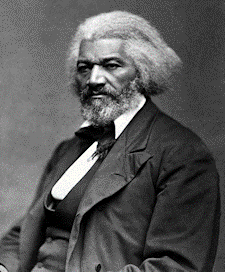 Frederick Douglass (1818-1895) Frederick Douglass (1818-1895)
Frederick Douglass (born Frederick Augustus Washington Bailey) was an American social reformer, abolitionist, orator, writer, and statesman. After escaping from slavery in Maryland, he became a national leader of the abolitionist movement in Massachusetts and New York, gaining note for his oratory and incisive antislavery writings. In his time, he was described by abolitionists as a living counter-example to slaveholders’ arguments that slaves lacked the intellectual capacity to function as independent American citizens. Northerners at the time found it hard to believe that such a great orator had once been a slave. Douglass wrote several autobiographies. He described his experiences as a slave in his 1845 autobiography, Narrative of the Life of Frederick Douglass, an American Slave, which became a bestseller, and was influential in promoting the cause of abolition, as was his second book, My Bondage and My Freedom (1855). After the Civil War, Douglass remained an active campaigner against slavery and wrote his last autobiography, Life and Times of Frederick Douglass. First published in 1881 and revised in 1892, three years before his death, it covered events during and after the Civil War. Douglass also actively supported women’s suffrage, and held several public offices. Without his approval, Douglass became the first African American nominated for Vice President of the United States as the running mate and Vice Presidential nominee of Victoria Woodhull, on the Equal Rights Party ticket. Douglass was a firm believer in the equality of all peoples, whether white, black, female, Native American, or Chinese immigrants. He was also a believer in dialogue and in making alliances across racial and ideological divides, and in the liberal values of the U.S. Constitution. When radical abolitionists, under the motto “No Union with Slaveholders”, criticized Douglass’ willingness to engage in dialogue with slave owners, he replied: “I would unite with anybody to do right and with nobody to do wrong.” |
|
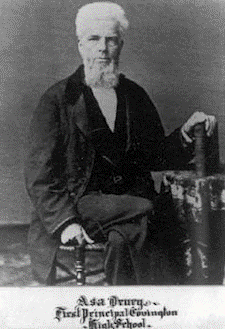 Asa Drury (1801-1870) Asa Drury (1801-1870)
Asa Drury was an American Baptist minister and educator primarily teaching at Granville Literary and Theological Institution (today’s Denison University) in Granville, Ohio and the Western Baptist Theological Institute in Covington, Kentucky, and establishing the public schools in Covington. He is best known for his antebellum abolitionist views and his role in establishing the Underground Railroad in Ohio. |
|
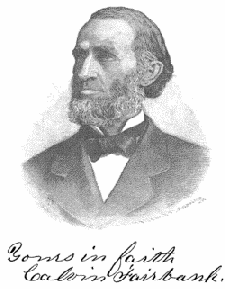 Calvin Fairbank (1816-1898) Calvin Fairbank (1816-1898)
American abolitionist minister who spent more than 17 years in prison for his anti-slavery activities. |
|
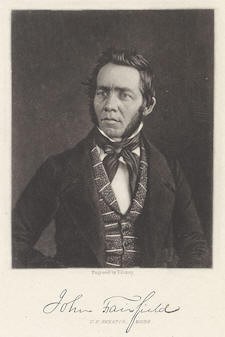 John Fairfield (1797-1847) John Fairfield (1797-1847)
John Fairfield was a “conductor” of the Underground Railroad who was extensively involved in operations in present-day West Virginia prior to the American Civil War. He was known for his often unusual and inventive methods for helping runaway slaves escape to free states. He has also been referred to by the name James Fairfield. |
|
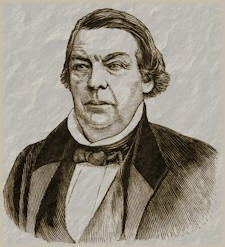 Dr. Bartholomew Fussell (1794-1871) Dr. Bartholomew Fussell (1794-1871)
Bartholomew Fussell was born into a prominent Quaker family in Chester County on January 9, 1794. As a young man he went to Maryland to study medicine. During this time, he began instructing slaves how to read the Bible. Although in Maryland it was not illegal for slaves to learn to read and write, whites were discouraged from teaching them. Years later, Dr. Fussell would assist many of his former students at his home known as “The Pines” when they were making their way to freedom. |
|
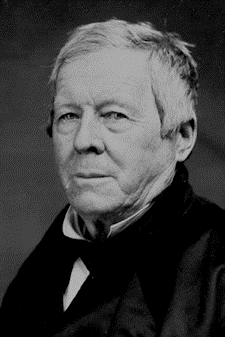 Thomas Garrett (1789-1871) Thomas Garrett (1789-1871)
An abolitionist and leader in the Underground Railroad movement before the American Civil War. |
|
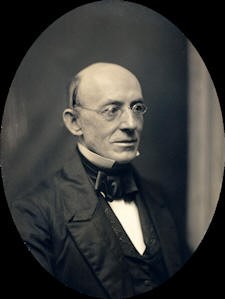 William Lloyd Garrison (1805-1879) William Lloyd Garrison (1805-1879)
William Lloyd Garrison was a prominent American abolitionist, journalist, suffragist, and social reformer. He is best known for his widely-read abolitionist newspaper The Liberator, which he founded with Isaac Knapp in 1831 and published in Boston until slavery in the United States was abolished by Constitutional amendment in 1865. He was one of the founders of the American Anti-Slavery Society, and promoted immediate, as opposed to gradual, emancipation of slaves in the United States. |
|
 Samuel Green (c. 1802-1877) Samuel Green (c. 1802-1877)
Samuel Green was an African-American slave, freedman, and minister of religion, who was jailed for 10 years in 1857 for possessing a copy of the anti-slavery novel Uncle Tom’s Cabin by Harriet Beecher Stowe. |
|
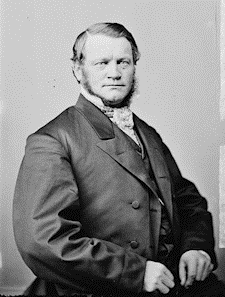 Josiah Bushnell Grinnell (1821-1891) Josiah Bushnell Grinnell (1821-1891)
Josiah Bushnell Grinnell was a U.S. Congressman from Iowa’s 4th congressional district, an ordained Congregational minister, founder of Grinnell, Iowa and benefactor of Grinnell College. Grinnell was also a ‘conductor’ on the Underground Railroad and was associated with John Brown. He provided shelter to John Brown in 1859 after Brown’s anti-slavery raids in Kansas and Missouri. |
|
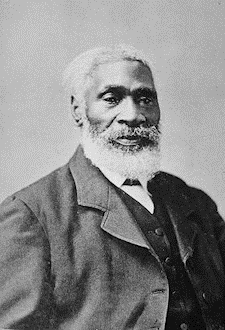 Josiah Henson (1789-1883) Josiah Henson (1789-1883)
Maryland slave who escaped to Canada, founding a settlement for fugitive slaves, becoming an abolitionist, author and minister. The first black man to be featured on a Canadian stamp. |
|
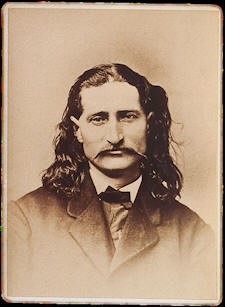 James Butler “Wild Bill” Hickok (1837-1876) James Butler “Wild Bill” Hickok (1837-1876)
Gunfighter, gambler, lawman, abolitionist and facilitator of the Underground Railroad. His father’s Illinois farm was a station on the Underground Railroad and he learned his shooting skills protecting the farm with his father from slave catchers. |
|
 Laura Smith Haviland (1808-1898) Laura Smith Haviland (1808-1898)
An American abolitionist, suffragette, and social reformer. She was an important figure in the history of the Underground Railroad. |
|
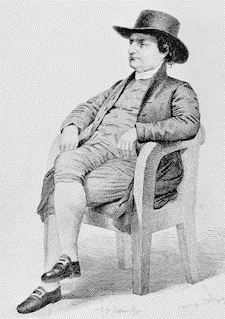 Isaac Hopper (1771-1852) Isaac Hopper (1771-1852)
Isaac Tatem Hopper was an American abolitionist who was active in Philadelphia in the anti-slavery movement and protecting fugitive slaves and free blacks from slave kidnappers. He was also co-founder of Children’s Village with 23 others. He moved to New York City in 1829 to run a Quaker bookstore. From 1841-1845 he served as treasurer and book agent for the American Anti-Slavery Society. In 1845 he became active in prison reform and devoted the rest of his life to the Prison Association of New York. |
|
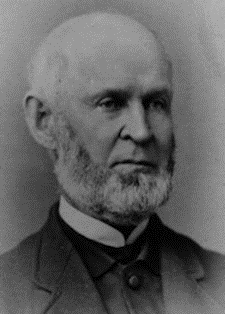 Roger Hooker Leavitt (1805-1885) Roger Hooker Leavitt (1805-1885)
Col. Roger Hooker Leavitt was a prominent landowner, early industrialist and Massachusetts politician who with other family members was an ardent abolitionist, using his home in Charlemont, Massachusetts as an Underground Railroad station for slaves escaped from the South. The escaped slave Basil Dorsey lived in Leavitt’s home for nearly six years until eventually settling in Florence, Massachusetts. |
|
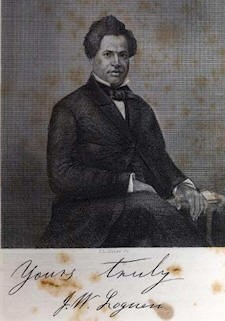 Jermain Wesley Loguen (1813-1872) Jermain Wesley Loguen (1813-1872)
Rev. Jermain Wesley Loguen , born Jarm Logue, in slavery, was an African-American abolitionist and bishop of the African Methodist Episcopal Zion Church, and an author of a slave narrative. |
|
 Samuel J. May (1797-1871) Samuel J. May (1797-1871)
Samuel Joseph May was an American reformer during the nineteenth century, and championed multiple reform movements including education, women’s rights, and abolitionism. May argued on behalf of all working people that the rights of humanity were more important than the rights of property and advocated for minimum wages and legal limitations on the amassing of wealth. He was born on September 12, 1797, in an upper class Boston area. May was the son of Colonel Joseph May, a merchant, and Dorothy Sewell, who was descended from or connected to many of the leading families of colonial Massachusetts, including the Quincys and the Hancocks. His sister was Abby May Alcott, mother of novelist Louisa May Alcott. In 1825, he married Lucretia Flagge Coffin with whom he had five children. Author Eve LaPlante, who wrote several books about his sister Abby May Alcott and a book about Sewall ancestor, Judge Samuel Sewall is one of his direct descendants.
|
|
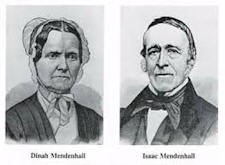 Isaac Mendenhall (1806-82) and Dinah Mendenhall (1807-89) Isaac Mendenhall (1806-82) and Dinah Mendenhall (1807-89)
Quaker abolitionists, the Mendenhalls harbored freedom seekers on the Underground Railroad in their nearby home, Oakdale. Originally members of Old Kennett Meeting, which became divided on the issue of slavery, they helped found Longwood Progressive Meeting in 1853. Dinah was a member of a committee that met with Pres. Lincoln in 1862 to urge him to enact the Emancipation Proclamation. Both were firm supporters of women’s voting rights. |
|
|
Lucretia Mott (née Coffin: 1793-1880) Lucretia Mott (née Coffin) was a U.S. Quaker, abolitionist, women’s rights activist, and social reformer. She had formed the idea of reforming the position of women in society when she was amongst the women excluded from the World Anti-Slavery Convention in 1840. In 1848 she was invited by Jane Hunt to a meeting that led to the first meeting about women’s rights. Mott helped write the Declaration of Sentiments during the 1848 Seneca Falls Convention. Her speaking abilities made her an important abolitionist, feminist, and reformer. When slavery was outlawed in 1865, she advocated giving former slaves who had been bound to slavery laws within the boundaries of the United States, whether male or female, the right to vote. She remained a central figure in the abolition and suffrage movement until her death in 1880. Mott was a Quaker preacher early in her adulthood. |
|
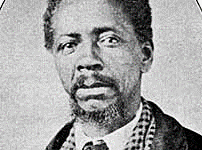 John Parker (1827-1900) John Parker (1827-1900)
John P. Parker was an American abolitionist, inventor, iron moulder and industrialist. Parker, who was African American, helped hundreds of slaves to freedom in the Underground Railroad resistance movement based in Ripley, Ohio. He rescued fugitive slaves for nearly fifteen years. He was one of the few black people to patent an invention before 1900. His house in Ripley has been designated a National Historic Landmark and restored. |
|
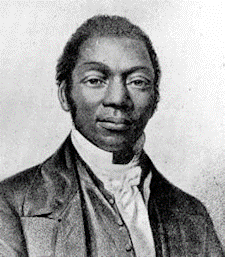 James W.C. Pennington (1807-1870) James W.C. Pennington (1807-1870)
James William Charles Pennington was an African-American orator, minister, writer, and abolitionist active in Brooklyn, New York. He escaped at the age of 19 from slavery in western Maryland and reached New York. After working in Brooklyn and gaining some education, he was admitted to Yale University as its first black student. He completed studies and was ordained as a minister in the Congregational Church, later also serving in Presbyterian churches for congregations in Hartford, Connecticut; and New York. After the Civil War, he served congregations in Natchez, Mississippi; Portland, Maine; and Jacksonville, Florida. In the antebellum period, Pennington was an abolitionist, and among the American delegates to the Second World Conference on Slavery in London. In 1850, he happened to be in Scotland when the Fugitive Slave Act was passed by the US Congress. As it increased the risk for fugitive slaves in the North, Pennington stayed in the British Isles while friends worked to buy his freedom from his former master and then from his estate. Pennington raised funds for the abolition movement on the public lecture circuit in England. Pennington wrote and published what is considered the first history of blacks in the United States, The Origin and History of the Colored People (1841). His memoir, The Fugitive Blacksmith, was first published in 1849 in London. |
|
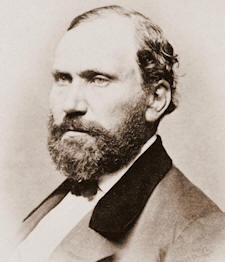 Allan Pinkerton (1819-1884) Allan Pinkerton (1819-1884)
Allan J. Pinkerton was a Scottish-American detective and spy, best known for creating the Pinkerton National Detective Agency. He was born in Gorbals, Glasgow, Scotland, to William Pinkerton and his wife, Isobel McQueen, on August 25, 1819. He left school at the age of 10 after his father’s death. Pinkerton read voraciously and was largely self-educated. A cooper by trade, Pinkerton was active in the Scottish Chartist movement as a young man. Pinkerton emigrated to the United States in 1842. He was not raised in a religious upbringing, and was a lifelong atheist. In 1843 Pinkerton heard of Dundee Township, Illinois, fifty miles northwest of Chicago on the Fox River. He built a cabin and started a cooperage, sending for his wife in Chicago when their cabin was complete. As early as 1844, Pinkerton worked for the Chicago abolitionist leaders, and his Dundee home was a stop on the Underground Railroad. In 1859, he attended the secret meetings held by John Brown and Frederick Douglass in Chicago along with abolitionists John Jones and Henry O. Wagoner. At those meetings, Jones, Wagoner, and Pinkerton helped purchase clothes and supplies for Brown. Jones’ wife, Mary, guessed that the supplies included the suit Brown was hanged in after the failure of John Brown’s raid on Harpers Ferry in November 1859. |
|
 John Wesley Posey (1801-1884) John Wesley Posey (1801-1884)
John Wesley Posey was a significant figure in the Underground Railroad in Indiana, America. Posey was one of the organizers of the Anti-Slavery League of Indiana. A significant source of information on the Underground Railroad in Indiana is William Cockrum’s 1915 work, History of the Underground Railroad, as It Was Conducted by the Anti-Slavery League. According to Cockrum, Posey owned a coal mine that served as a way station for as many as 1000 escaped slaves. (This is one of the rare instances in which the underground railroad was actually subterranean.) Posey also helped to organize the activities of the Anti-Slavery League. According to Cockrum, the League operated a spy network in Kentucky. Agents of the League masquerading as traveling peddlers would make contact with slaves and help the slaves escape. Posey was a medical doctor. He volunteered as a surgeon for the Union army during the American Civil War, and served at the Battle of Shiloh. He was also politically active, and was elected as a Whig to be Treasurer of Pike County, Indiana, serving from 1844 to 1848. |
|
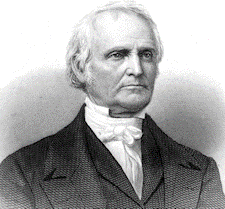 Rev. John Rankin (1793-1886) Rev. John Rankin (1793-1886)
John Rankin was an American Presbyterian minister, educator and abolitionist. Upon moving to Ripley, Ohio in 1822, he became known as one of Ohio’s first and most active “conductors” on the Underground Railroad. Prominent pre-Civil War abolitionists William Lloyd Garrison, Henry Ward Beecher and Harriet Beecher Stowe were influenced by Rankin’s writings and work in the anti-slavery movement. When Henry Ward Beecher was asked after the end of the Civil War, “Who abolished slavery?,” he answered, “Reverend John Rankin and his sons did.” |
|
 Alexander Milton Ross (1832-1897) Alexander Milton Ross (1832-1897)
Alexander Milton Ross was born in Belleville, Upper Canada and died in Detroit, Michigan. Ross was an agent for the secret Underground Railroad slave escape network, known in that organization and among slaves as “The Birdman” for his preferred cover story as an ornithologist. |
|
 David Ruggles (1810-1849) David Ruggles (1810-1849)
David Ruggles was an African-American abolitionist in Manhattan, New York who resisted slavery by his participation in a Committee of Vigilance and the Underground Railroad to aid fugitive slaves reach free states. He was a printer in New York City during the 1830s, who also wrote numerous articles, and “was the prototype for black activist journalists of his time.” He claimed to have led more than 600 fugitive slaves to freedom in the North, including Frederick Douglass, who became a friend and fellow activist. Ruggles is also credited with opening the first African American bookstore in the United States. |
|
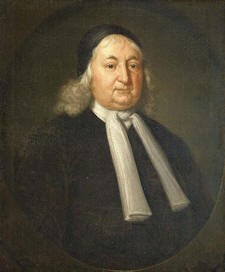 Samuel Seawell (1652-1730) Samuel Seawell (1652-1730)
Samuel Sewall was a judge, businessman, and printer in the Province of Massachusetts Bay, best known for his involvement in the Salem witch trials, for which he later apologized, and his essay The Selling of Joseph (1700), which criticized slavery. He served for many years as the chief justice of the Massachusetts Superior Court of Judicature, the province’s high court. |
|
 Mary Ann Shadd (1823-1893) Mary Ann Shadd (1823-1893)
Mary Ann Shadd Cary was an American-Canadian anti-slavery activist, journalist, publisher, teacher, and lawyer. She was the first Black woman publisher in North America and the first woman publisher in Canada. Shadd Cary was an abolitionist who became the first female African-American newspaper editor in North America when she edited The Provincial Freeman in 1853. |
|
| Robert Smalls (1839-1915)
After the American Civil War he returned to Beaufort and became a politician, winning election as a Republican to the South Carolina State legislature and the United States House of Representatives during the Reconstruction era. Smalls authored state legislation providing for South Carolina to have the first free and compulsory public school system in the United States. He founded the Republican Party of South Carolina. Smalls was the last Republican to represent South Carolina’s 5th congressional district until 2010. |
|
 William Still (1821-1902) William Still (1821-1902)
William Still was an African-American abolitionist based in Philadelphia, Pennsylvania. He was a conductor on the Underground Railroad, businessman, writer, historian and civil rights activist. Before the American Civil War, Still was chairman of the Vigilance Committee of the Pennsylvania Anti-Slavery Society. He directly aided fugitive slaves and also kept records of the people served in order to help families reunite. After the war, Still continued as a prominent businessman, a coal merchant, and philanthropist. He used his meticulous records to write an account of the underground system and the experiences of many refugee slaves, entitled The Underground Railroad Records. |
|
|
Harriet Beecher Stowe (1811-1896) Harriet Elisabeth Beecher Stowe was an American abolitionist and author. She came from the Beecher family, a famous religious family, and is best known for her novel Uncle Tom’s Cabin (1852), which depicts the harsh conditions for enslaved African Americans. The book reached millions as a novel and play, and became influential in the United States and Great Britain, energizing anti-slavery forces in the American North, while provoking widespread anger in the South. Stowe wrote 30 books, including novels, three travel memoirs, and collections of articles and letters. She was influential for both her writings and her public stances and debates on social issues of the day. |
|
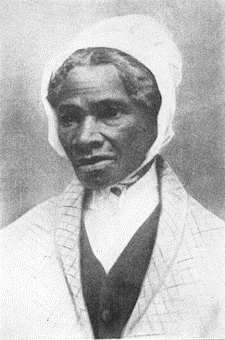 Sojourner Truth (c. 1797-1883) Sojourner Truth (c. 1797-1883)
Sojourner Truth, born Isabella [Belle] Baumfree, was an African-American abolitionist and women’s rights activist. Truth was born into slavery in Swartekill, Ulster County, New York, but escaped with her infant daughter to freedom in 1826. After going to court to recover her son in 1828, she became the first black woman to win such a case against a white man. She gave herself the name Sojourner Truth in 1843 after she became convinced that God had called her to leave the city and go into the countryside “testifying the hope that was in her”. Her best-known speech was delivered extemporaneously, in 1851, at the Ohio Women’s Rights Convention in Akron, Ohio. The speech became widely known during the Civil War by the title “Ain’t I a Woman?,” a variation of the original speech re-written by someone else using a stereotypical Southern dialect, whereas Sojourner Truth was from New York and grew up speaking Dutch as her first language. During the Civil War, Truth helped recruit black troops for the Union Army; after the war, she tried unsuccessfully to secure land grants from the federal government for former slaves (summarised as the promise of “forty acres and a mule”). In 2014, Truth was included in Smithsonian magazine’s list of the “100 Most Significant Americans of All Time”. |
|
|
Harriet Tubman (c. 1822-1913) Harriet Tubman was an American abolitionist and political activist. Born into slavery, Tubman escaped and subsequently made some 13 missions to rescue approximately 70 enslaved people, including family and friends, using the network of antislavery activists and safe houses known as the Underground Railroad. During the American Civil War, she served as an armed scout and spy for the Union Army. In her later years, Tubman was an activist in the struggle for women’s suffrage. Born a slave in Dorchester County, Maryland, Tubman was beaten and whipped by her various masters as a child. Early in life, she suffered a traumatic head wound when an irate slave owner threw a heavy metal weight intending to hit another slave, but hitting her instead. The injury caused dizziness, pain, and spells of hypersomnia, which occurred throughout her life. After her injury, Tubman began experiencing strange visions and vivid dreams, which she ascribed to premonitions from God. These experiences, combined with her Methodist upbringing, led her to become devoutly religious. In 1849, Tubman escaped to Philadelphia, then immediately returned to Maryland to rescue her family. Slowly, one group at a time, she brought relatives with her out of the state, and eventually guided dozens of other slaves to freedom. Traveling by night and in extreme secrecy, Tubman (or “Moses”, as she was called) “never lost a passenger”. After the Fugitive Slave Act of 1850 was passed, she helped guide fugitives farther north into British North America, and helped newly freed slaves find work. Tubman met John Brown in 1858, and helped him plan and recruit supporters for his 1859 raid on Harpers Ferry. When the Civil War began, Tubman worked for the Union Army, first as a cook and nurse, and then as an armed scout and spy. The first woman to lead an armed expedition in the war, she guided the raid at Combahee Ferry, which liberated more than 700 slaves. After the war, she retired to the family home on property she had purchased in 1859 in Auburn, New York, where she cared for her aging parents. She was active in the women’s suffrage movement until illness overtook her, and she had to be admitted to a home for elderly African Americans that she had helped to establish years earlier. After her death in 1913, she became an icon of courage and freedom. |
|
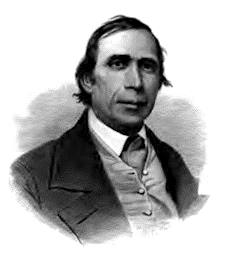 Jonathan Walker (1799-1878) Jonathan Walker (1799-1878)
Jonathan Walker, known as “The Man with the Branded Hand”, was an American reformer who became a national hero in 1844 when he was trialed and sentenced as a slave stealer following his attempt to help seven runaway slaves find freedom. He was branded on his hand by the United States Government with the markings “S S”, for “Slave Stealer”. |
|
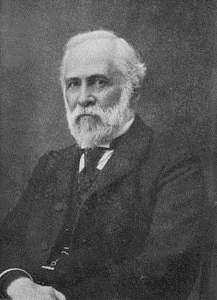 Charles Augustus Wheaton (1809-1882) Charles Augustus Wheaton (1809-1882)
Charles Augustus Wheaton was a businessman and major figure in the central New York state abolitionist movement and Underground Railroad, as well as other progressive causes. He was one of the founders of the First Congregational Church in Syracuse, which took an abolitionist stand, and was part of the Vigilance Committee that formed in 1850 to resist the Fugitive Slave Law. In 1860 he moved to Northfield, Minnesota, where he was one of two men who donated the land to found the Carleton College campus. There he served with the Minnesota legislature. The father of a total of 17 children, he had an active family life. He later became the editor of two local newspapers. |
|
 John Greenleaf Whittier (1807-1892) John Greenleaf Whittier (1807-1892)
John Greenleaf Whittier was an American Quaker poet and advocate of the abolition of slavery in the United States. Frequently listed as one of the Fireside Poets, he was influenced by the Scottish poet Robert Burns. Whittier is remembered particularly for his anti-slavery writings as well as his book Snow-Bound. |
|
| Sources and Further Reading: www.wikipedia.org used under the terms of the Creative Commons Attribution Share-Alike license (CC-BY-SA); |

